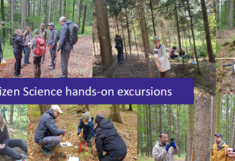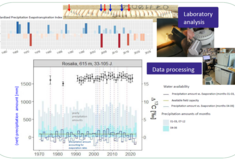Projects of the Institute of Soil Research
Adapt4K
Adapt4K
| Activity Title | Adapt4K |
| Contact Person (including email) | Rebecca Hood-Nowotny rebecca.hood(at)boku.ac.at |
| Duration of activities | 10/2024-09/2027 |
| Funding agency/Project | FTI Land Niederösterreich |
| Equipment installed in the field | none |
| Brief description of activities | Adapt4K’s goal, is to arm foresters and the forestry sector with the state of the art scientific information on the risk specific stands face, to underpin decision making on how to adapt to future climate change. |
| Other relevant persons | Katharina Schott |
Adapt4K’s goal, is to arm foresters and the forestry sector with the state of the art scientific information on the risk specific stands face, to underpin decision making on how to adapt to future climate change..
Bark-BeAT
| Activity Title | Bark-BeAT |
| Contact Person (including email) | Rebecca Hood-Nowotny rebecca.hood@boku.ac.at |
| Duration of activities | 10/2021-10/2025 |
| Funding agency/Project | Waldfonds |
| Equipment installed in the field | none |
| Brief description of activities | Application of stable isotope methods (13C,18O) to link climate change-induced drought stress and bark beetle susceptibility in Austrian forests |
| Other relevant persons | Katharina Schott, Barbara Kitzler (BFW), Gernot Hoch (BFW) |
Spruce is the most economically relevant and most common tree species in Austrian forests. Due to its shallow roots, its water availability is limited, so that drought and high temperatures particularly favor drought stress and its risk of bark beetle infestation. Signatures of stable isotopes (13C, 18O) in tree rings provide detailed information on past climatic fluctuations as well as on physiological responses of a tree to environmental and geomorphological conditions (e.g. availability and utilization of soil water). This knowledge can significantly improve our understanding of past and future impacts of climate change (temperature increase, changing precipitation patterns: extreme summer drought, low snowfall, ...). Drought stress detected by measuring tree ring isotope chronology can be a good way of predicting susceptibility to subsequent bark beetle infestation. Such information provides the basis for the creation of drought and bark beetle risk maps, which, combined with growth models, facilitate the development of long-term climate change adaptation strategies for possible climate scenarios.
The project will use isotope methods at well-characterized sites to empirically determine the effects of climate change on the physiology (water use efficiency, stomatal conductance and photosynthetic capacity) of spruce in Austria and, if present, also allow conclusions to be drawn about an increased risk of bark beetle infestation.



